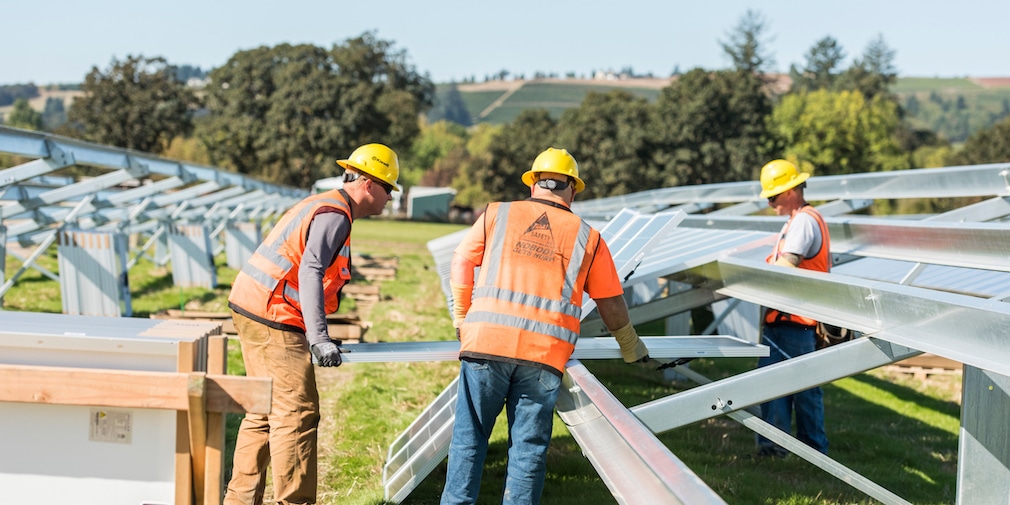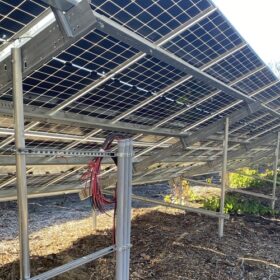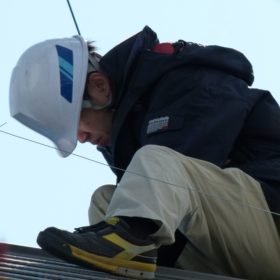Across emerging solar markets including the southeast states of Florida and Georgia, developers and turnkey service providers are struggling to meet the demand of having enough qualified technicians and solar installers for rooftop solar and distributed generation projects.
St. Petersburg College (SPC) is working to fill the gap for more certified solar workers in the Tampa Bay, Florida region. The Gulf Coast college recently partnered with the University of Central Florida’s Florida Solar Energy Center (FSEC), the first solar energy apprenticeship program registered with the U.S. Department of Labor.
“SPC’s goal has been to strengthen the workforce through the use of apprenticeships, which include structured on-the-job training and related technical instruction,” said Jennifer Bodnar, apprenticeship coordinator at SPC.
Future apprentices in the Florida training program must already be employed by a solar company that is an approved member of the apprenticeship solar consortium before participating in the program. While working, apprentices will take courses, fully paid for by their employer, to prepare them for certification in the solar installation market.
Interested employers seeking to participate in the SPC program can click here to apply or receive more information, while interested applicants can click here for more information.
“I think this will be the most comprehensive program in the state. It includes curriculum that other programs don’t have, like thermal and plumbing, and it covers both commercial and residential solar,” Bodnar said.
In 2022 SPC received grant funding to help employers defray costs as part of the Expansion of Registered Apprenticeship Programs (ERAP).
“With the grant, SPC is able to offer funds to offset some of the expenses to employers, as well as explore additional funding resources,” Bodnar said. “As a state college, we have access to a wide network, to help reduce employer costs.”
“The Solar Energy Technician Apprenticeship program addresses the future needs in Florida’s workforce,” said Colleen Kettles, director of workforce and business development, FSEC. “I am very grateful that St. Petersburg College has stepped up and is working with us on the training.”
The apprenticeship requirement of the Inflation Reduction Act of 2022 requires that any U.S. taxpayer who employs four or more people must also employ at least one qualified apprentice. And, depending on when construction begins on a project, a certain journeyman to apprenticeship ratio must be met. Prevailing wage requirements states that the taxpayer (developer) must pay any laborer, mechanic, contractor or subcontractor at the prevailing rates for the location in which the construction takes place, as determined by the Secretary of Labor. The prevailing wage rate requirements provides correction and penalty mechanisms for a taxpayer’s failure to comply.
To meet apprenticeship requirements, developers must ensure that for construction beginning this year, at least 10% of labor is performed by qualified apprentices. This steps up to 12.5% for construction that began after December 31, 2022, and before January 1, 2024. And then bumps up again to 15% for construction that begins after December 31, 2023.
According to the Solar Energy Industries Association (SEIA), with 11,761 workers, Florida’s solar market employed the second highest amount of workers of any U.S. state after California’s 75,712 solar workers, as of data through December 31, 2022.
This content is protected by copyright and may not be reused. If you want to cooperate with us and would like to reuse some of our content, please contact: editors@pv-magazine.com.








By submitting this form you agree to pv magazine using your data for the purposes of publishing your comment.
Your personal data will only be disclosed or otherwise transmitted to third parties for the purposes of spam filtering or if this is necessary for technical maintenance of the website. Any other transfer to third parties will not take place unless this is justified on the basis of applicable data protection regulations or if pv magazine is legally obliged to do so.
You may revoke this consent at any time with effect for the future, in which case your personal data will be deleted immediately. Otherwise, your data will be deleted if pv magazine has processed your request or the purpose of data storage is fulfilled.
Further information on data privacy can be found in our Data Protection Policy.